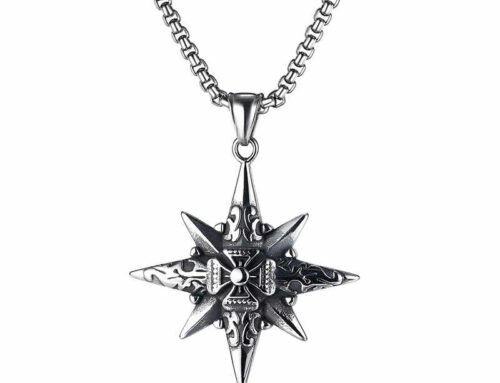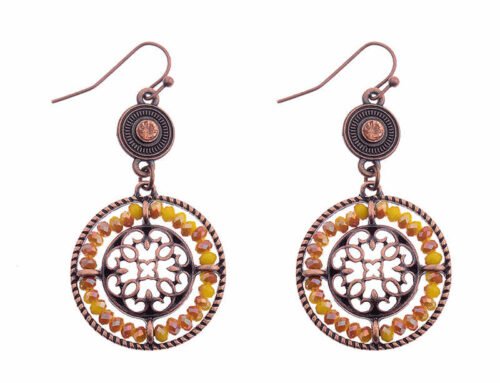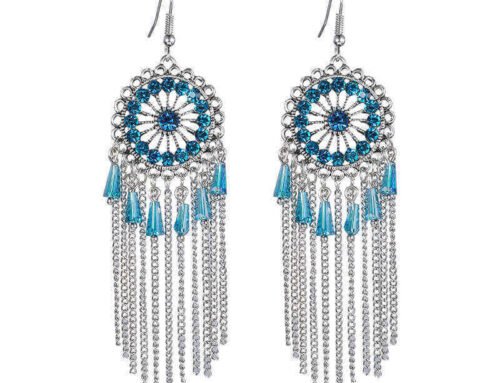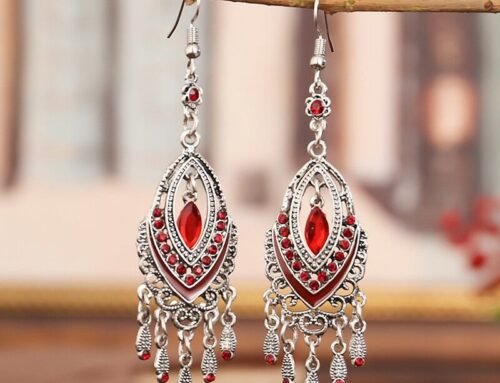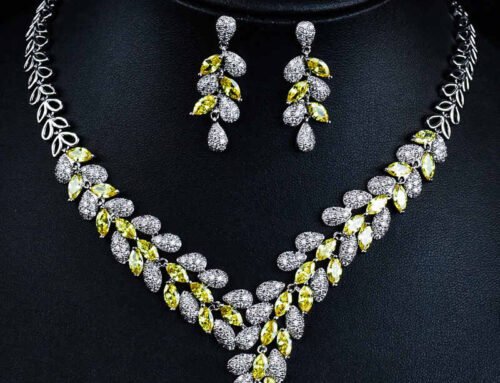In the world of fashion jewelry, few materials have captured the modern aesthetic quite like titanium steel. Known for its sleek, gunmetal grey sheen, remarkable durability, and hypoallergenic characters, it has become the go-to choice for those seeking a blend of industrial edge and sophisticated elegance. But have you ever stopped to wonder how a raw, unassuming metal is transformed into the polished titanium rings on your finger or the titanium necklace gracing your collarbone?
The journey from industrial coil to a finished piece of wearable art is a fascinating symphony of engineering precision, artistic vision, and meticulous craftsmanship. This is not a process of simple casting; it is one of forging, cutting, and refining. Join us as we pull back the curtain and delve into the complicated production workflow that brings titanium steel jewelry to life.
Part 1: The Raw Essence – Demystifying the Material
First, a crucial clarification: “Titanium Steel” is a common trade name, but it’s slightly misunderstanding. The material is not an alloy of titanium and steel. It is, in fact, 316L Stainless Steel, the same surgical-grade stainless steel used for medical implants and high-end watch cases. The “Titanium” in the name often refers to a specific plating or coloring process that gives it a dark, titanium-like hue, or sometimes to a small percentage of titanium in the alloy for enhanced properties.
So, why is 316L the gold standard for quality titanium jewelry?
- Hypoallergenic: It contains minimal nickel, making it safe for over 90% of people with metal sensitivities.
- Corrosion-Resistant: It withstands sweat, water, and everyday chemicals, preventing rust and tarnish.
- Exceptional Strength: It is incredibly durable and scratch-resistant, ensuring your titanium jewelry stands the test of time.
- Perfect Canvas: It takes to various surface treatments—polishing, plating, brushing—with exceptional results.
This superb raw material typically arrives at the titanium jewelry factory in large coils of wire for cute necklaces and titanium wedding bands, or in flat sheets for mens chain pendant and cufflinks.
Part 2: The Blueprint – Design and Prototyping
Before any metal is cut, the vision must be crystal clear.
- Conceptualization & Digital Art: It all begins with an idea. Designers sketch concepts, drawing inspiration from architecture, nature, geometry, and current fashion trends. These sketches are then translated into precise digital models using Computer-Aided Design (CAD) software. This digital model is a 3D blueprint, defining every curve, angle, and dimension with absolute precision.
- Rapid Prototyping: To ensure the design is perfect in both form and function, a physical prototype is often created. This is done using 3D Printing or stereolithography. The prototype is usually made from a resin or plastic polymer, allowing designers and engineers to hold the design, check its proportions, feel its weight, and test its wear ability. This stage is crucial for identifying any design flaws that might not be visible on a screen, saving significant costs down the line.
Part 3: The Transformation – The Core Manufacturing Processes
With the prototype approved, the real metallurgical magic begins. The chosen manufacturing method depends entirely on the design’s complexity.
- The Laser’s Precision: Cutting
For pendants, charms, and other flat or intricately shaped components, Computer Numerical Control (CNC) Laser Cutting is the tool of choice. The sheet of 316L stainless steel is placed into the laser cutter. Guided by the CAD file, a high-power laser beam traces the design’s outline with micron-level precision, vaporizing the metal and leaving behind a perfectly clean, sharp-edged piece. This method is ideal for creating complex filigree, geometric patterns, and detailed logos that would be impossible by traditional cutting tools.
- The Art of Formation: Stamping and Blanking
For simpler, high-volume shapes like standard chain links or basic oval pendants, Stamping is a highly efficient process. Massive hydraulic presses force a hardened steel die (a custom-shaped cutter) through the metal sheet, punching out the shape in a fraction of a second. This is a rapid, cost-effective method for producing large quantities of same components.
- The Circle of Life: Ring Making
Creating titanium rings are specialized process. For band-style rings, the process often starts with a solid rod of 316L steel. A machine automatically cuts the rod into small, measured blanks. These blanks are then fed into a ring-rolling machine, which uses big pressure to curl the straight blank into a perfect circle, which is then laser-welded at the seam.
For more substantial signet or mens titanium wedding bands, the process often involves CNC Milling. A solid block of steel is clamped into a milling machine. Using rotating cutting tools, the machine meticulously carves away the excess metal, following the 3D CAD model to reveal the final ring shape with incredible detail. This is a subtractive process, where the artwork is uncovered from within the block.
- The Delicate Chain: Weaving and Assembly
Chainmaking is one of the most charming parts of titamium jewelry production. While some simple chains can be machine-stamped, finer and more complex chains like Figaro, Cuban Link, or Rope chains are often assembled by hand or with the aid of specialized automation.
- Forming Links: Wire is fed into a machine that coils it into a tight spring. This spring is then sliced vertically, creating hundreds of individual, identical open links.
- Weaving: Skilled artisans, using fine-tipped pliers, meticulously interlock these open links in the specific pattern of the chosen chain style. It’s a painstaking process that requires a steady hand and a keen eye for consistency.
- Closing: Once the chain reaches the desired length, each open link is carefully squeezed shut. For high-end pieces, this closure is often reinforced with a tiny spot of laser welding, ensuring the chain will not pull apart under stress.
- The Unbreakable Bond: Welding and Soldering
Assembling different components—like attaching a pendant for men to a bail or connecting a clasp to a chain—requires a permanent bond. Traditional soldering, which uses a filler metal with a lower melting point, is not suitable for 316L steel as it can compromise its corrosion resistance.
Instead, the industry relies on Laser Welding. A highly focused laser beam delivers an intense burst of heat to a microscopic point, fusing the metal pieces together at a molecular level. This creates an incredibly strong, clean, and virtually invisible joint without affecting the surrounding material’s properties or finish.
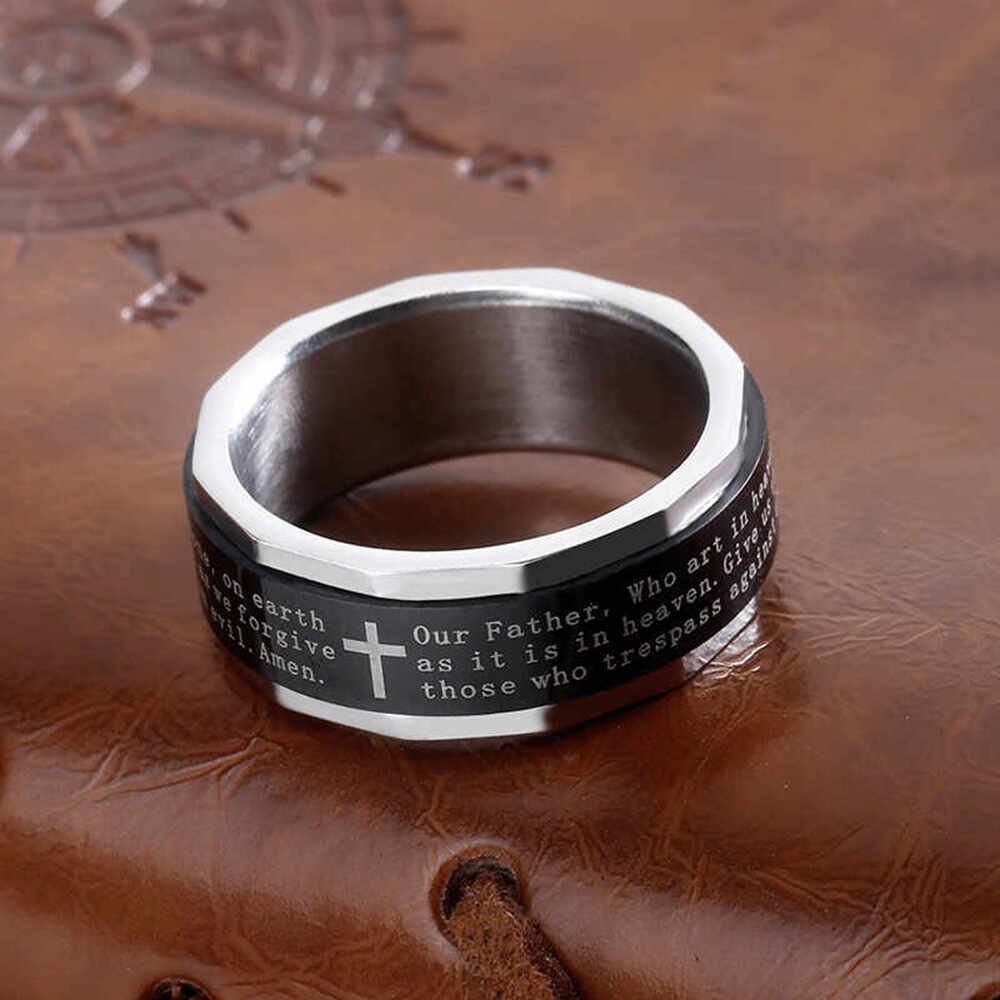
Part 4: The Refinement – Surface Finishing and Polishing
A raw, manufactured piece of titanium jewelry is rough, sharp, and lacks luster. This stage is where it truly gets its feature and feel.
- Tumbling and Deburring: The newly cut and assembled pieces are placed in large, rotating drums called tumblers. They are mixed with an abrasive media (small ceramic chips) and a lubricating compound. For hours, the tumbling action grinds away sharp edges (burrs) and smooths out surface imperfections, giving the titanium jewelry a uniform, pre-polished finish.
- Polishing: Unleashing the Brilliance: This is a multi-step art form.
- Initial Polishing: Pieces are mounted on rotating wheels or handled by skilled workers against polishing wheels coated with coarse abrasives. This removes any remaining tool marks and begins to shine the surface.
- High-Gloss Polishing: Subsequent rounds use progressively finer abrasives, eventually using a soft muslin wheel with a special polishing compound (like Rouge). This is what creates the brilliant, mirror-like shine that titanium steel is famous for.
- Alternative Finishes: Not every piece is meant to be a mirror. Satin or Brushed finishes are achieved by brushing the surface with fine wire brushes or abrasive belts, creating a subtle, non-reflective texture. A Sandblasted finish, achieved by blasting the piece with fine particles, gives a matte, rough texture.
Part 5: The Color of Modernity – Plating and PVD Coating
While the natural silver-white of polished steel is beautiful, the iconic black and gold tones of titanium steel come from advanced coating technologies.
- IP Gold Plating: For gold and rose gold finishes, the best method is Ion-Plated (IP) Gold or PVD Gold. The titanium jewelry is placed in a vacuum chamber. A small piece of solid gold (usually 18k or 24k) is vaporized, and an electrical charge is applied, causing the gold ions to bond with the steel surface at a molecular level. This creates a coating that is far more durable, tarnish-resistant, and longer-lasting than traditional electroplating.
- The Iconic Black: PVD Coating: The signature black titanium steel color is achieved through Physical Vapor Deposition (PVD). In a similar vacuum chamber, a source material (like titanium) is vaporized. A reactive gas, such as Nitrogen, is introduced. The gas reacts with the vaporized titanium, forming a thin, ultra-hard layer of Titanium Nitride (TiN) on the jewelry’s surface. This coating is not a paint; it is a ceramic layer that is incredibly scratch-resistant, corrosion-proof, and permanently bonded to the base metal.
Part 6: The Final Touches – Quality Control and Assembly
No piece leaves the factory without undergoing rigorous scrutiny.
- Quality Inspection: Every single product is individually inspected under bright lights and magnifying lenses. Inspectors look for any surface scratches, plating inconsistencies, welding flaws, or structural defects. Any piece that doesn’t meet the strict quality standards is immediately rejected and recycled.
- Ultrasonic Cleaning: After all the handling, the titanium jewelry gets a final, deep clean. It is placed in an ultrasonic cleaner, where high-frequency sound waves create microscopic bubbles in a cleaning solution that scrub away every last trace of oil, dust, and polishing compound.
- Final Assembly: This is where all components come together. Clasps (like lobster claws or spring rings), jump rings, and any other findings are securely attached. For safety, titanium rings are often sized and checked for a perfect fit.
Part 7: The Presentation – Packaging and Shipping
The experience of a quality product begins with the unboxing. The perfect titanium jewelry pieces are carefully placed in anti-tarnish bags, elegant boxes, or on branded presentation cards. They are packed securely to prevent any movement or scratching during transportation, ready to be shipped to retailers and, finally, to you.
Conclusion: More Than Just an Accessory
The next time you fasten a titanium bracelet or slide dangle earrings onto your ears, remember the incredible process it has undertaken. It is a product of human ingenuity, from the digital dreams of a designer to the roaring precision of industrial machinery and the steady hands of master craftsmen. It is a piece of modern alchemy, forged in fire and refined to perfection, designed not just to accessorize your outfit, but to endure as a timeless part of your story. That is the true value and beauty of titanium steel.
